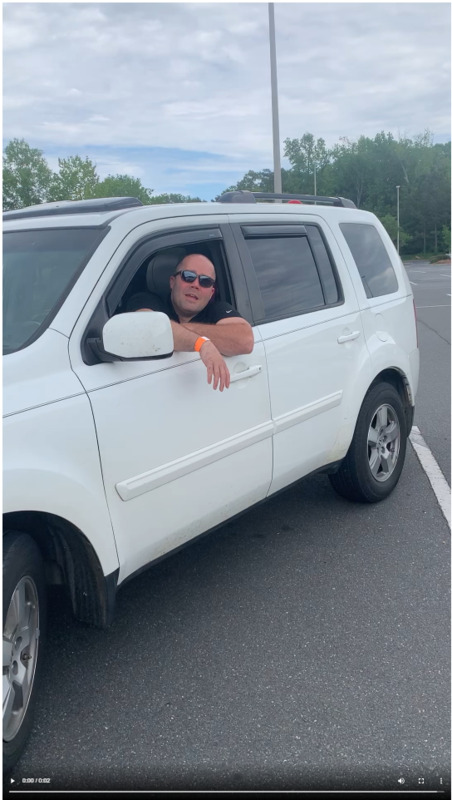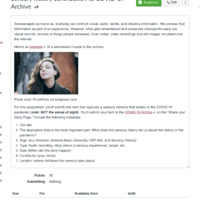Item
A lack of touch in a tactile world
Media
Title (Dublin Core)
A lack of touch in a tactile world
Disclaimer (Dublin Core)
DISCLAIMER: This item may have been submitted in response to a school assignment prompt. See Linked Data.
Description (Dublin Core)
When the COVID-19 virus struck in the spring of 2020, I was still completing my undergraduate degree in history at a small university near the border of North and South Carolina. My university transitioned to online learning around the second week of March. One of my classes that semester was an upper level special topics course on Public History. Seizing the opportunity to document the COVID-19 pandemic for future generations, my course instructor had students to document and journal about our everyday lives in quarantine during the second half of the course as we transitioned online. The above is a video I took for that course of some my friends from back home, where I had returned to live in isolation with my mother, father, brothers, and grandfather; while at home, I would drive about once a week to an empty target parking lot to socialize with some of my friends from the community. We would sit in our cars, spaced at least fifteen feet apart, in order to avoid spreading the virus. Though I was thankful for the opportunity to still see my friends, and to have at least one social outing each week, the sense, or rather lack of sense, that was most prevalent in my mind, and still is when recalling the COVID-19 pandemic lockdowns in the spring of 2020, is not being able to touch my friends. I am a very tactile person, and giving a hug or a handshake to my friends is an important part of expressing my love and feelings for others. Though during the COVID-19 pandemic we were able to communicate by means of modern day technology, such as zoom, and even in cases such as mine due to the state where I lived, still being able to socialize in outdoor areas, the fear of the virus prevented me from being able to express friendship in one of the most natural ways. Though only ten to fifteen feet apart, it was if we had all created an invisible bubble that could not penetrated. Though this was all for good reason, it did not make the psychological implications any less real. The ten feet that separated me from my friends for over two months felt like ten million miles, and my thoughts constantly played tricks on me. I grew accustomed to not touching or being near others. It was in early May, almost two months after returning home from college, that I touched someone outside of my family unit for the first time. A friend of mine who I went to high school with, who also worked on a farm that borders my family's farm, wanted to ride ATV's together. I agreed, and we remained at least six feet distant from one another. We it came time for him to return home, however, he extended his hand to give me a "fist bump." Normally, he probably would have tried to hug me, but even the notion of touching our fists together made me hesitant, though I did return the friendly gesture. The virus had me, and most of society, programmed to remain enclosed to ourselves, and in doing so, though necessary for a time, unable to engage in the most basic of human interactions. Prior to the pandemic, I never had give thought to the importance of touching in my relationships, however, in a post-pandemic world, I will never take for granted the most basic of human interactions, such as touch, because in a moment it could be gone.
Date (Dublin Core)
Creator (Dublin Core)
Contributor (Dublin Core)
Event Identifier (Dublin Core)
HST634
Partner (Dublin Core)
Type (Dublin Core)
video
text story
Controlled Vocabulary (Dublin Core)
English
Home & Family Life
English
Social Distance
Curator's Tags (Omeka Classic)
Contributor's Tags (a true folksonomy) (Friend of a Friend)
sensory history
social distancing
North Carolina
Linked Data (Dublin Core)
Date Submitted (Dublin Core)
05/24/2022
Date Modified (Dublin Core)
05/26/2022
06/07/2022
06/17/2022
Date Created (Dublin Core)
05/05/2020
Item sets
This item was submitted on May 24, 2022 by John Barham using the form “Share Your Story” on the site “A Journal of the Plague Year”: http://mail.covid-19archive.org/s/archive
Click here to view the collected data.

